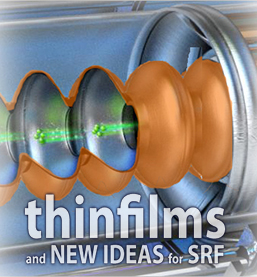Speaker
Description
Nearly all superconducting RF (SRF) cavities today use superconducting niobium: whether it be bulk niobium or thin niobium films on copper. However, Nb/Cu cavities must be operated in very strict thermal conditions so as to operate in the residual resistive regime. To overcome this limitation, new thin film materials must be investigated and A-15 superconductors are a promising avenue of investigation. V3Si is an A-15 superconductor, shown to have high critical temperature (17.1 K) and RRR value up to 80, making it a promising candidate for SRF-cavities[1].
The RRR and critical temperature of V3Si is closely linked to the Stoichiometry, which in turns depends on substrate and deposition temperature [2] . Previous experiments have relied on dual magnetron sputtering or reactive sputtering, which have had problems achieving the correct stoichiometry.
The magnetron sputtering technique HiPIMS has been shown to ion bombarding films during deposition. This ion bombardment has been shown to have a similar effect to sample heating allowing greater control of stoichiometry [3]. This combined with new heating techniques to improve the existing benchmarks of V3Si films.
[1] S. M. Deambrosis, et al, Phys. C Supercond. its Appl., vol. 441, no. 1–2, pp. 108–113, 2006.
[2] V. Palmieri, “New Materials for Superconducting Cavities,” Proc. SRF 2001, no. 6, pp. 162–169, 2001.
[3] A. Anders, Thin Solid Films, vol. 518, no. 15, pp. 4087–4090, 2010.

